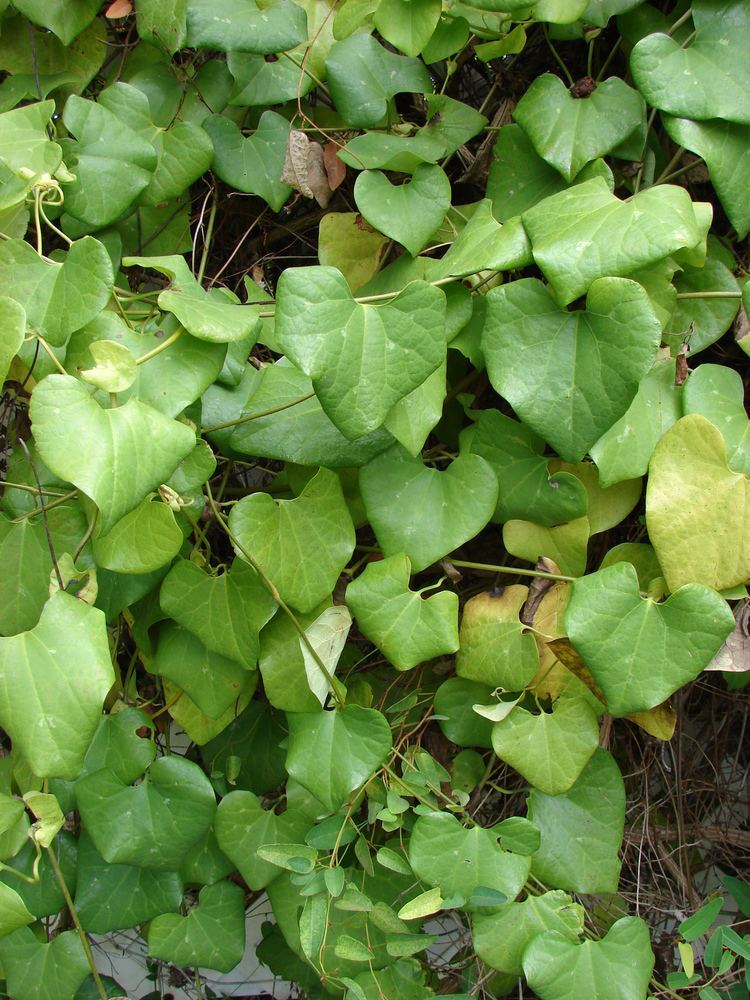Scientific name Aristolochia littoralis Rank Species | Genus Aristolochia Higher classification Aristolochia | |
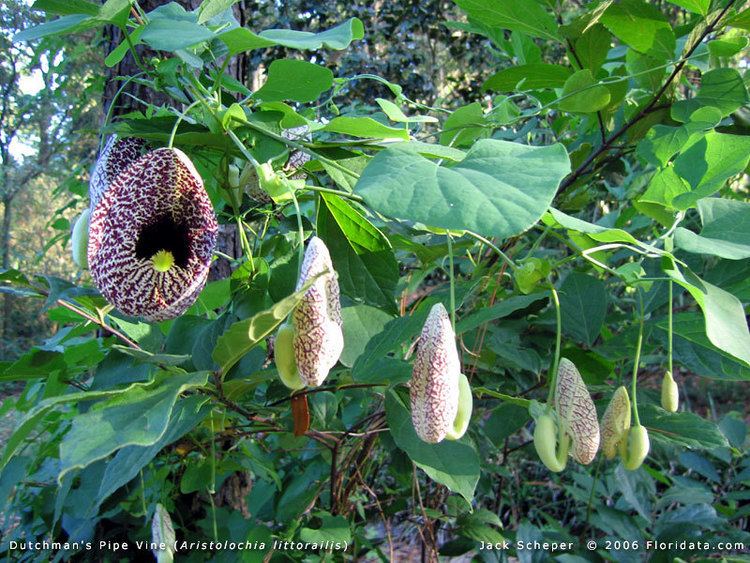 | ||
Similar Aristolochia, Aristolochiaceae, Aristolochia gigantea, Aristolochia grandiflora, Aristolochia ringens | ||
Aristolochia littoralis calico flower elegant dutchman s pipe
Aristolochia littoralis (calico flower, elegant Dutchman's pipe) is a species of evergreen deciduous vine belonging to the Aristolochiaceae family.
Contents
- Aristolochia littoralis calico flower elegant dutchman s pipe
- Aristolochia littoralis
- Etymology
- Description
- Distribution
- Habitat
- Cultivation
- References
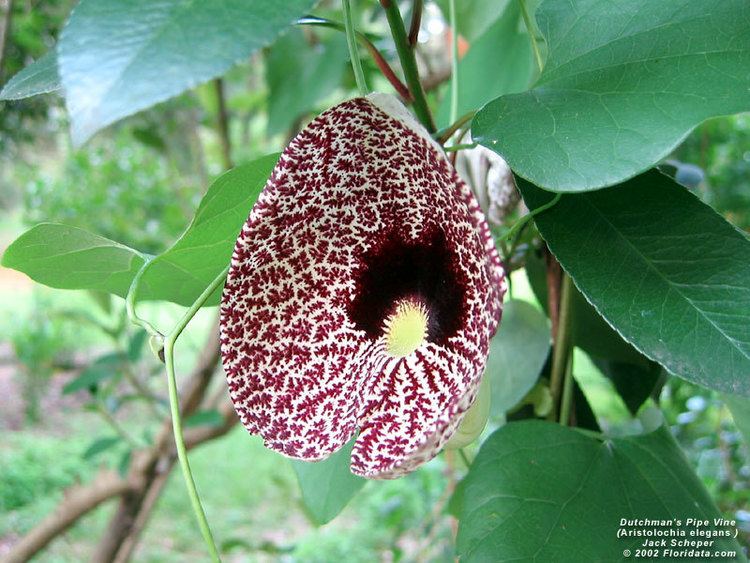
Aristolochia littoralis
Etymology
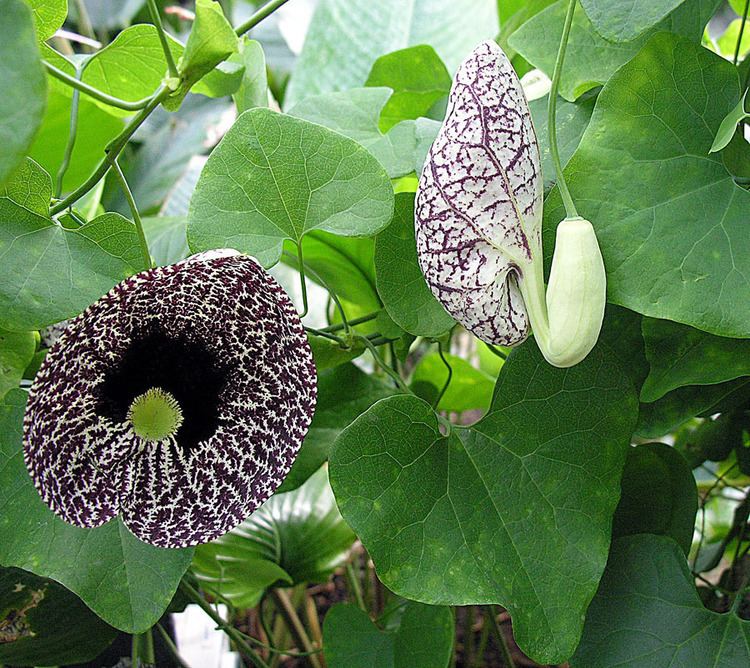
The scientific name Aristolochia was developed from Ancient Greek aristos (άριστος) "best" + locheia (λοχεία), "childbirth" or "childbed", as in ancient times the plant was thought to be effective against infections caused by childbirth. The species Latin name littoralis means “coastal”.
Description
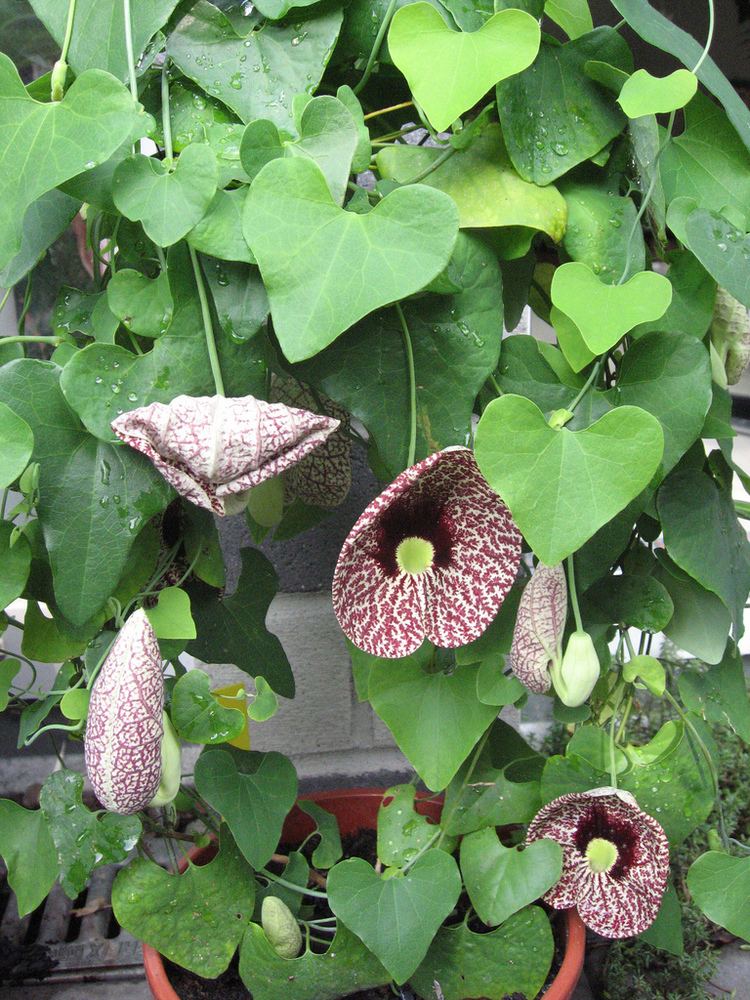
Aristolochia littoralis is a climbing vine that can reach about 3–4.5 metres (9.8–14.8 ft) in length. The slender stems are woody and the leaves are bright green, cordate, amplexicaul, 7–9 centimetres (2.8–3.5 in) long and 5–10 centimetres (2.0–3.9 in) wide, forming a dense attractive foliage. Flowers are heart-shaped, greenish yellow with intricate purplish-brown markings. These unusual flowers are about 7–8 centimetres (2.8–3.1 in) long, grow solitary in the leaf axils and resemble a Sherlock Holme's pipe (hence the common name of "Dutchman's pipe"). The inner surface of the flared mouth is completely purplish-brown. The flowering period extends through all Summer. These plants are pollinated by flies which are attracted by the unpleasant carrion-like odor produced by the flowers. The numerous winged seeds are borne in dry dehiscent capsules that split like small parachutes. As the seeds are winged they are easily dispersed by wind. Plants in the related genus Pararistolochia differ by having fleshy moist fruit that do not split. This plant contains aristolochic acid, a toxic alkaloid.
Distribution
The vining plant is native to southernand western South America. It is found in:
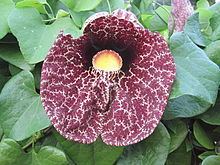
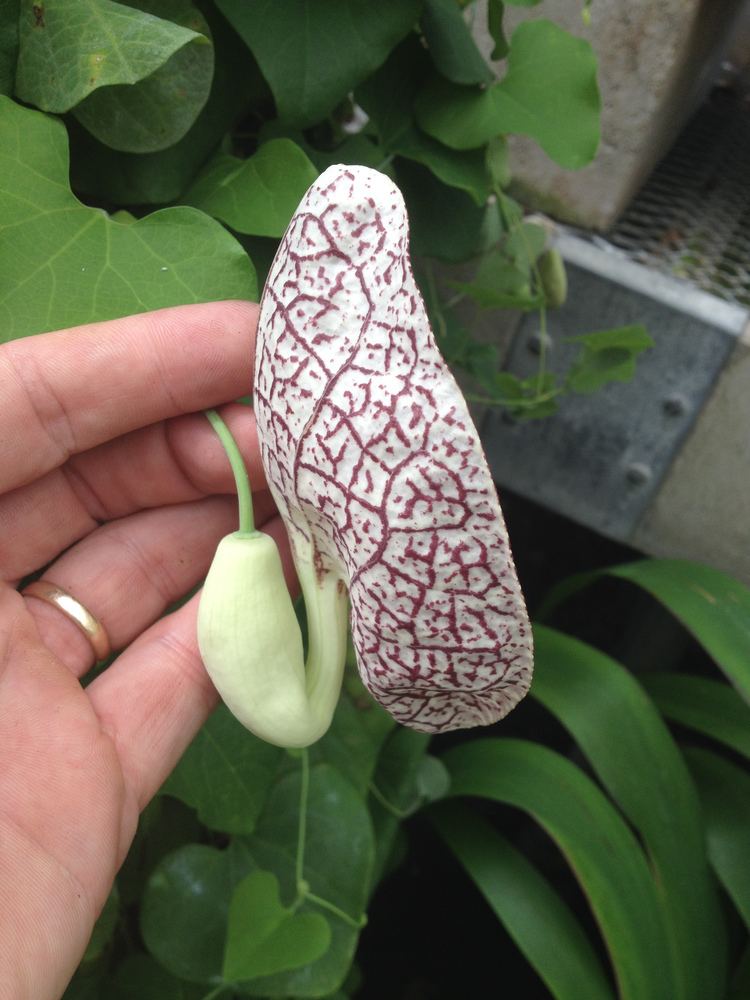
It is an invasive species in Australia and in the southern United States. In Australia it is fatal to the caterpillars of two butterflies, the Cairns birdwing (Ornithoptera euphorion) and of the threatened Richmond birdwing (O. richmondia), and threatens to displace their proper host plant, A. tagala.
Habitat
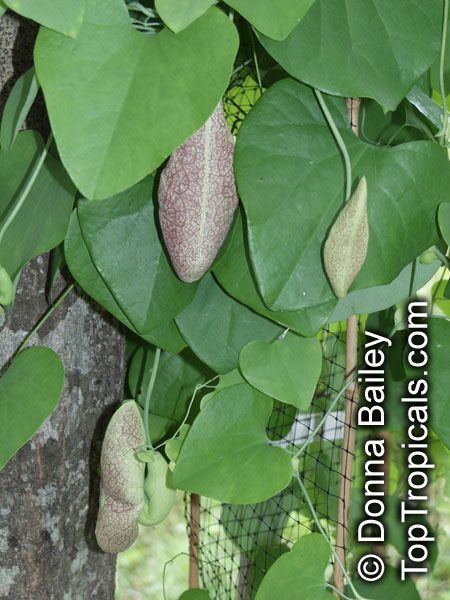
A. littoralis prefers acid-neutral soils (pH 5.5 – 7.0) and average moisture, in part sun to shade, at an elevation of about 0–1,150 metres (0–3,773 ft)
Cultivation
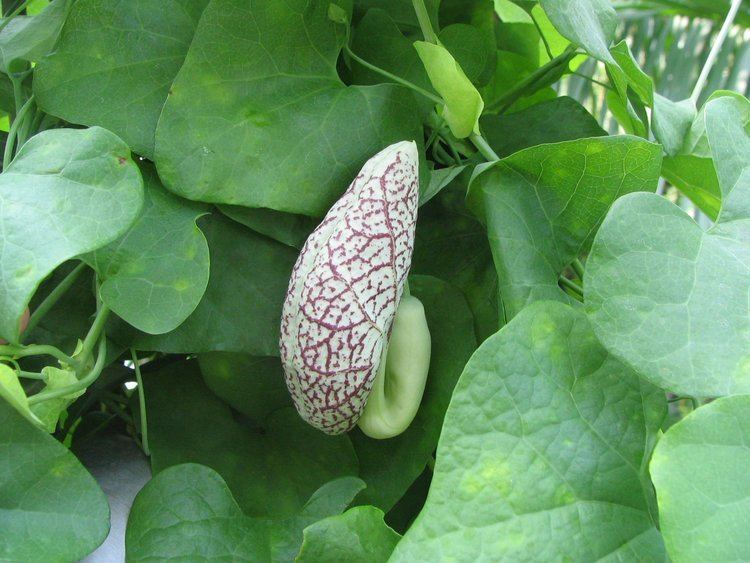
This subtropical plant requires a minimum temperature of 7 °C, and in temperate regions is grown under glass. It has gained the Royal Horticultural Society's Award of Garden Merit.
